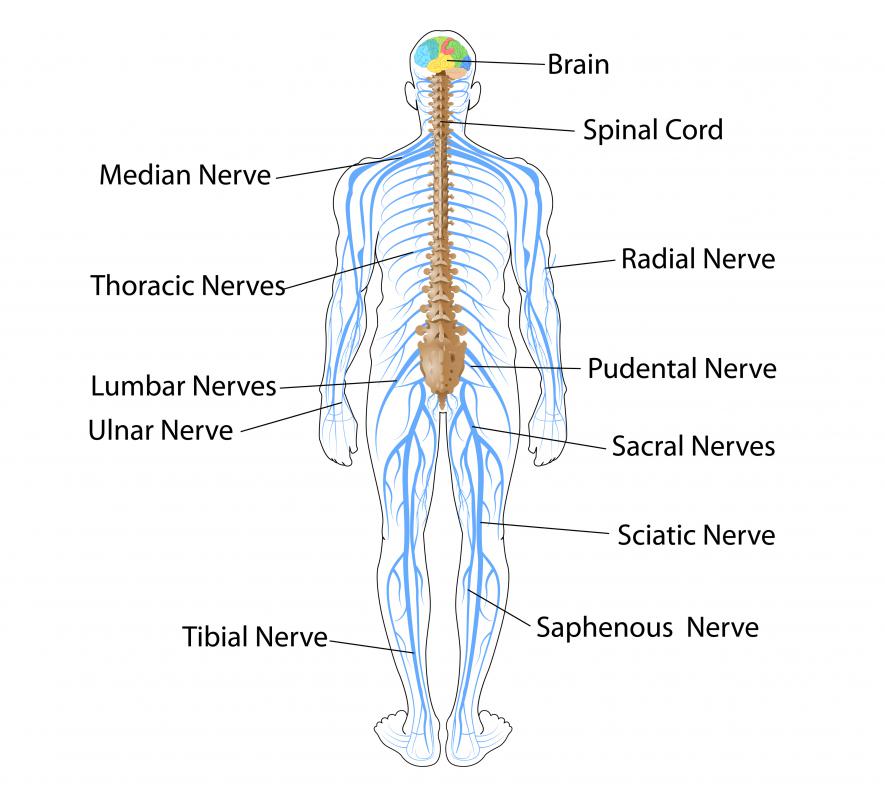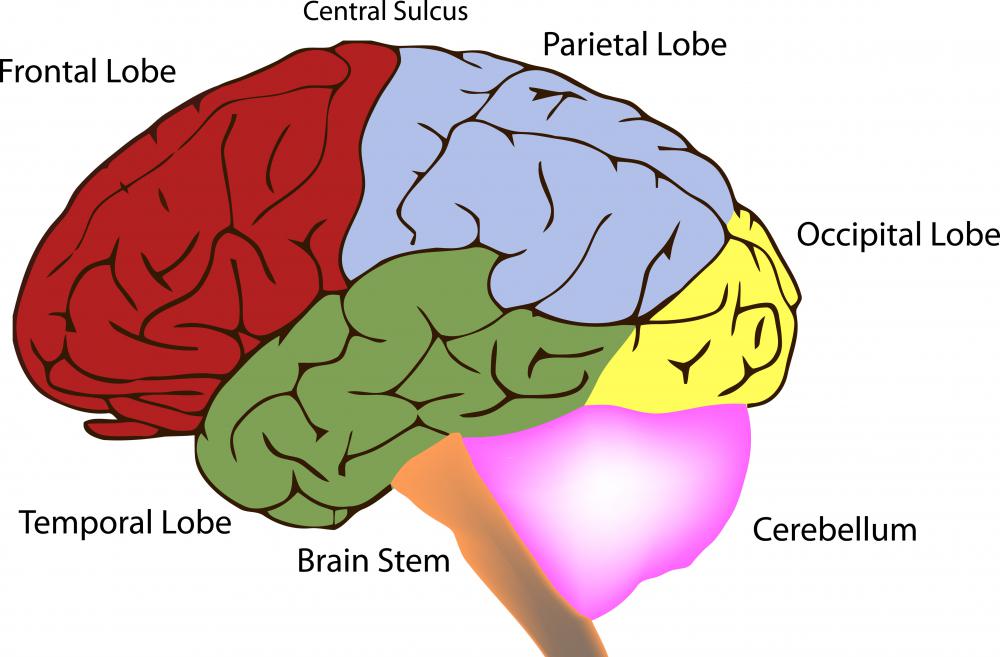At WiseGEEK, we're committed to delivering accurate, trustworthy information. Our expert-authored content is rigorously fact-checked and sourced from credible authorities. Discover how we uphold the highest standards in providing you with reliable knowledge.
What is the Central Nervous System?
The central nervous system (CNS) is one of the two parts of the nervous system. The other is the peripheral nervous system which includes nerves in the organs, muscles, arms, and legs. The CNS consists of the brain and the spinal cord. It is the "control center" for the entire body and regulates how the body will function.
The average brain weighs 3 pounds (1.3 kg) and contains 100 billion nerve cells, or neurons. The skull encloses the brain in bone. The brain contains three main areas: the cerebrum, the cerebellum, and the medulla oblongata. The cerebrum is the conscious part of the brain, while the cerebellum and the medulla oblongata form the part of the brain that controls unconscious behavior.

The medulla oblongata, along with the pons, regulates heartbeat, blood pressure, breathing, and reflexes such as swallowing and coughing. It is in the part of the brain known as the hindbrain and is nearest to the spinal cord. The cerebellum, connected to the back of the brainstem, is also part of the hindbrain. It coordinates fine motor movement and regulates balance and posture.

The cerebrum is in the forebrain and relates to the central nervous system functioning of reasoning, intelligence, learning, and memory. It also regulates sensory and motor controls. The cerebrum is the biggest part of the brain and is divided into the left and right hemispheres. The corpus callosum separates the cerebral hemispheres and is made up of nerve fibers.

The cerebral cortex is the covering on the brain's two hemispheres. Much of the sensory and motor control functioning of the central nervous system is located in the four divisions of the cerebral cortex lobes. The four divisions are the occipital, temporal, parietal, and frontal lobes.
The occipital lobe relates to the functioning of the eye and its visual messages. The temporal lobe relates to the ear and its processing of sounds. The parietal lobe relates to sensory messages such as taste, touch, pain, pressure, and temperature sensations such as hot or cold. The frontal lobe relates to thought, speech, and motor skills. All four lobes work together to help the body function.

The spinal cord section of the central nervous system connects the brain to the body. It is enclosed by the backbone, or vertebral column. Nerve cells work two ways between the brain and the spinal cord: they carry messages to the brain from the rest of the body and they carry messages from the brain to the rest of the body.
AS FEATURED ON:
AS FEATURED ON:















Discussion Comments
@dbuckley212
Actually, there are certain members of phylum chordata which are invertebrates, but are related to vertebrates. They usually have a central structure of some sort, and behave similar to insects. They also usually live in the water.
The central nervous system structure is much like a web of interconnected signals running to and fro, and converging on the central areas of the spine and the brain. These areas are the essential framework of all vertebrates, and defines a very large family of living organisms. Mammals, reptiles, and all members of phylum chordata.
Chiropractors understand the importance of dealing with spinal issues for the well being of a person's life in general. Much of stress and well-being is tied to how much pain someone is feeling and how well they are sleeping. With a bad back, it is not easy to get a good sleep or to feel well. This can even result in psychological issues.
I have experienced some of the worst pain in my life when I have had back issues in the past. This is because much of the nervous system is tied into the spinal chord, and feeling of pain is particularly acute there. It all channels nerves from all over the body into the brain, as well as sending signals for movement.
Post your comments